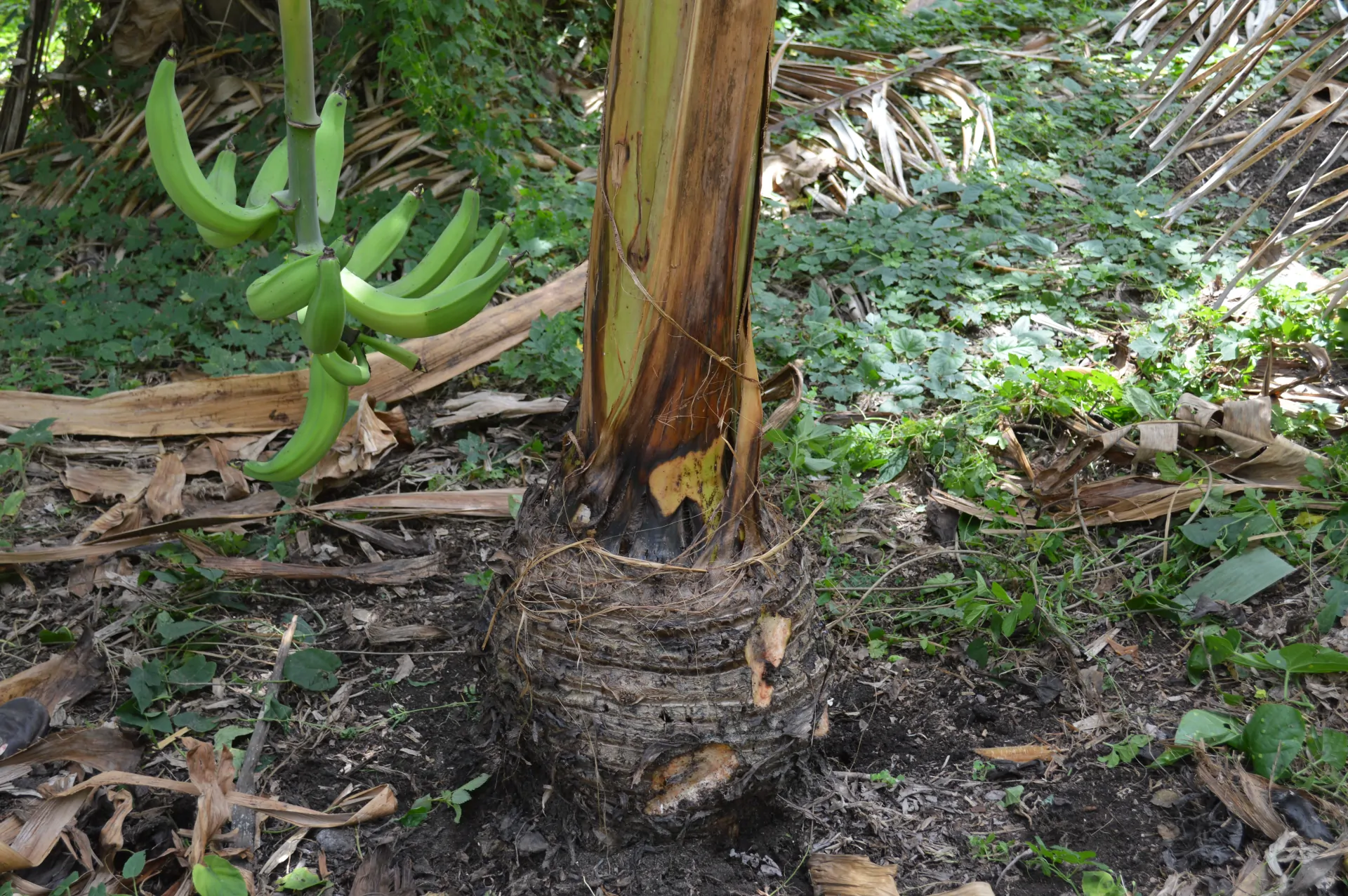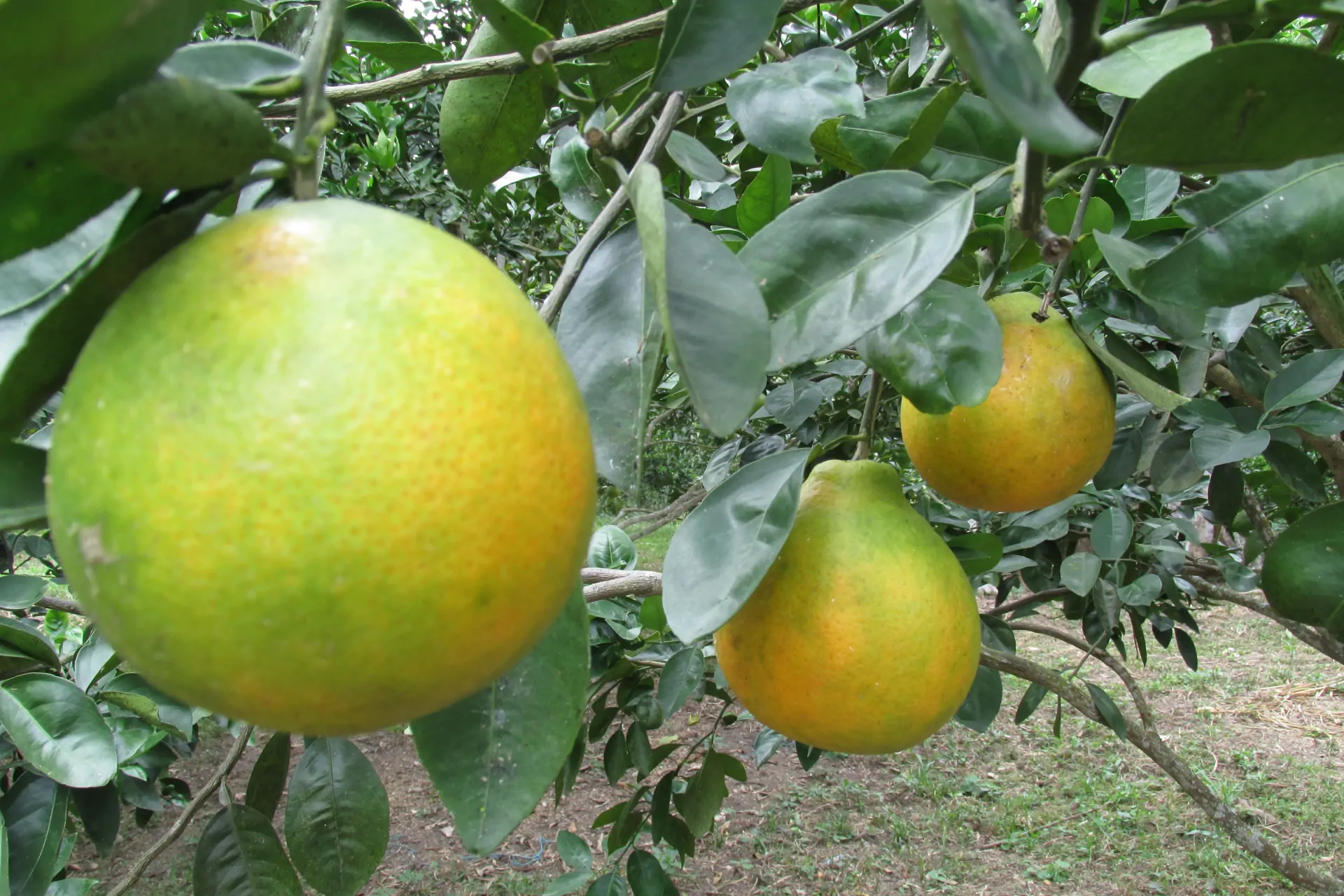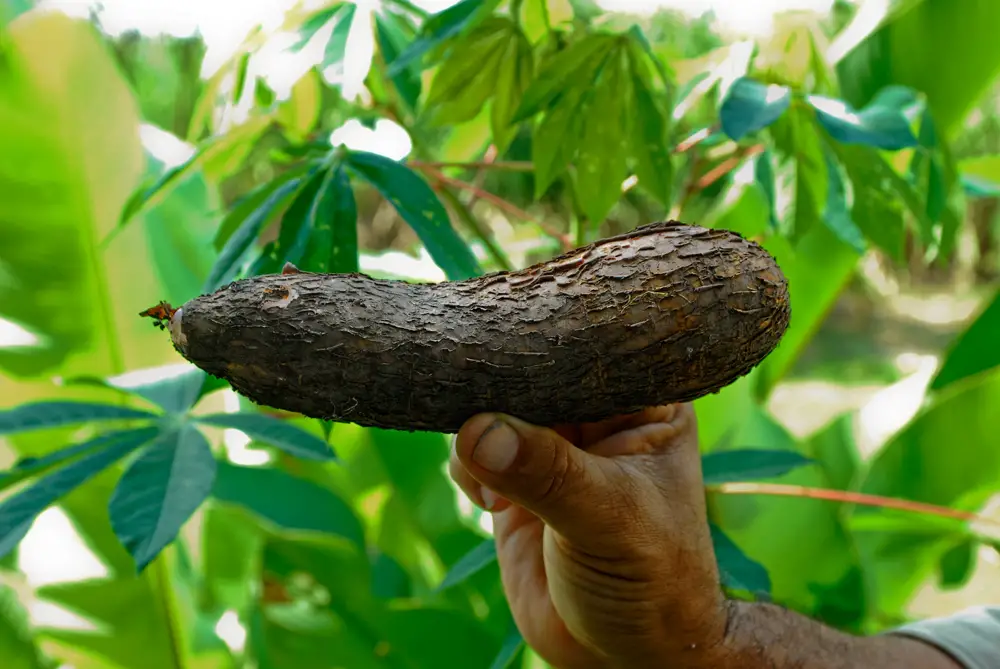Datasets
Different pests and diseases threaten crop production in the tropics. Vegetative propagated crops, such as cassava, are particularly sensitive to damage from pest infestation and pathogen infections, as they tend to build up in successive cycles of propagation. Continuously monitoring the spatial spread and incidence of pest and pathogen is necessary to act swiftly to new outbreaks and reduce the chances of spreading and re-introductions. A first step is to define and identify characteristic disease symptoms for each disease, including leaf mosaics, apical necrosis, root deformation etc. For decades CIAT has been working extensively on the understanding and the development of diagnostic tools and solutions for pathogens associated with such diseases. PestDisPlace is a collaborative initiative to integrate and collectively monitor the occurrence of such symptoms and associated pests and pathogens (including confirmation by molecular diagnostics). It is a modern LAMP (Linux, Apache, MySQL and PHP) web application that runs on the latest version of MariaDB and Laravel PHP framework. A team of CGIAR researchers curates the data before it is included into the PestDisPlace database and maps.
Cassava Mosaic Disease (CMD)CMD is caused by different species of viruses (geminiviruses), transmitted by whiteflies (Bemisa tabaci) and disseminated through infected cuttings. The most recent outbreak of severe CMD in Africa began in Uganda in the late 1980s and by now the disease has invaded more than 12 countries in East, Central and West Africa, and continues to spread. CMD, caused by distinct species of geminiviruses, has also been reported in south India and Sri Lanka, Indian cassava mosaic virus (ICMV) was recorded from South Asia in 1985, followed by Sri Lankan cassava mosaic virus (SLCMV) in 2002. One characteristic of CMD epidemics in Africa (and South India), is its association with mixed geminivirus infections that favor the rise of new more severe recombinant variants of the virus. In sub-Saharan Africa, CMD epidemics have caused average storage root yield losses of 20%, and up to 70% in susceptible cultivars. To this date, only one species of geminivirus (SLCMV) has been recorded associated with CMD in South East Asia (SEA). Cassava mosaic disease (CMD) was also recorded in eastern and central Cambodia in 2016 and is now probably present in other regions of SEA.
Cassava Common Mosaic Disease (CCMD)CCMD accounts for significant yield losses in South America, with recent reports indicating up to on 30% yield losses in Brazil. The disease has been reported in cassava and other crops in Brazil (since 1938), Colombia and Paraguay (1991), Venezuela (1995; 2015) and Mexico (1986; 1987). The disease is caused by a mechanically transmitted potexvirus known as Cassava common mosaic virus (CsCMV). The occurrence of distinct biological and serological strains of CsCMV has been described in previous reports and is being confirmed by sequencing strains recently isolated from CCMD-symptomatic plants collected in Argentina (2015, 2016), Venezuela (2015) and Peru (2017).
Cassava Frogskin Disease (CFSD)First reported by CIAT scientists in Colombia in 1971 in Colombia, is considered to be one of the most economically important disease in the Americas. Due to the uncertainty about the precise aetiology, work had focused on unravelling the cause, the aerial transmitter and possibilities for diagnosing this disease. The accumulated information suggests that CFSD is associated with mixed-pathogen infections, is not transmitted by neither contaminated soils nor botanical seed and has only been reported in the Americas.
Cassava Witches' Broom Disease (CWBD)CWBD threatens up to 40 million smallholder farmers in southeast Asia that depend on the crop for their livelihood. Named after the broom-like leaf proliferation it causes at the top of cassava plants, the disease has already swept through Vietnam, Thailand, Cambodia, Lao, China and the Philippines, resulting in dramatic reductions in cassava root starch content and massive yield losses. While CWB is present in Asia’s cassava crops and occurs at pandemic levels in Cambodia and central Vietnam, little or nothing is known about the ecology and epidemiology of this debilitating disease. Also, there’s a critical lack of information on the abundance, diversity and temporal dynamics of the insect groups that spread the disease in local cassava crops, and their ability to transmit CWB disease. Outbreaks of CWB have been reported in Asia in recent years, resulting in yield losses in Thailand, Cambodia, Laos, Vietnam Philippines and China. As described above, CIAT, together with local partners, conducted surveillance on more than 700 cassava fields in multiple Southeast Asian countries monitoring for pests and diseases12. CWB was found to affect 64% cassava fields in several prime cassava-growing areas, and was especially problematic in Cambodia where 78% of the cassava fields were impacted by CWB.
WhitefliesWhiteflies cause damage on the plants because their phloem feeding and the honeydew excreted that allows the growing of sooty mold and the subsequent reduction of photosynthetic rates. Together with this damage, some species are vectors of several viruses that cause severe yield losses. Bemisia tabaci is a species complex with more than 28 morphologically indistinguishable species (Shu-sheng et al. 2012) which until late 1980s were considered as a unique species highly polyphagous (de Barro et al, 2011). In that moment, two invasive groups were reported as biotypes B and Q. Biotype B or MEAM 1 (Middle East-Asia Minor 1) is the main vector of virus in common bean. Its introduction to Latin America caused not just the displacement of native biotypes (NW and NW2) but also the highest incidences of geminivirus in the world (Barbosa et al 2013). Other biotypes transmit important diseases in cassava in Africa (CMD, SLCMV), and more recently in Asia causing yield losses up to 60% (Minato et al, 2019). Severe episodes of direct damage have been reported for different biotypes on beans in Latin America and for cassava in some regions of Africa where the populations are super-abundant.
MealybugsThe cassava mealybug, Phenacoccus manihoti, is one of the most important pests of cassava worldwide. These insects are not able to fly but are dispersed by wind, water and humans. The cassava mealybug was inadvertently introduced from South America to Africa in the early 1970s. Over the years, the mealybug spread throughout Africa and its outbreaks inflict important yield losses estimated to be as high as 80%. The mealybug causes stunting, leaf distortion and loss, dieback and weakening of stems used for crop propagation as a result the tubers grow small. This mealybug had many natural enemies at South America and in this continent is relatively rare. In an effort between IITA, CIAT and other partners, the parasitic wasp Anagyrus lopezi was identified as an efficient controller and was brought and released in some 30 countries in the cassava belt of Africa. After many time of produce cassava in Asia free of pests and diseases, in 2008, this mealybug appeared in 70% of fields studied in Southeast Asia. Since 2010 until now, this wasp was released in Cambodia, Indonesia, Laos, Thailand, Viet Nam, and other countries of the region. For information about its management please visit https://youtu.be/ym9h-88oUgY
GreenmitesGreen mites of genus Mononychellus (Acari: Tetranychidae) are serious pests of cassava and can limiting drastically its production. Two species are particularly important because their invasive capacity and economic losses caused by their feeding, M. tanajoa (Bondar, 1938) and M. mcgregori (Flechtmann and Baker, 1970). These mites are found in the underside of the younger leaves. The distribution of these neotropical species is overlapping in some regions of their native range but outside of South America, M. tanajoa is restricted to Africa and M. mcgregori to Southeast Asia. Introduced into East Africa in 1970s, M. tanajoa can reduce yields by up 80% in areas of the african cassava belt (Yaninek and Herren 1988). Less known, M. mcgregori was just recently reported as invasive in Asia, where was first recorded in China in 2008 (Lu et al. 2014), one year later in Vietnam and in 2011 in Cambodia (Bellotti et al. 2012). Although M. mcgregori generally occurs at low densities (Bellotti et al. 2012), yield reductions of up to 60% have been reported in some cases of serious damage (Chen et al. 2010: cited in Lu et al. 2014). The introduction of predatory arthropods has allowed long-term control of these mites.
Potato Purple TopEn la región andina, la papa está amenazada por muchas plagas y enfermedades. En Ecuador, recientemente, se ha reportado la presencia de la punta morada de la papa, el chip cebra de la papa (conocido también como papa rayada o manchado interno del tubérculo) y el psílido de la papa. Hasta ahora estos problemas han estado restringidos a ese país; sin embargo, si se propagan a los países vecinos de la región tienen el potencial de causar grandes pérdidas a la industria de la papa, afectar los medios de subsistencia de los agricultores, especialmente de los pequeños, e incluso destruir la diversidad genética de este cultivo.
Credits
Concept by: Wilmer J. Cuellar, Leroy Mwanzia, Joe Tohme
Developers: Leroy Mwanzia, Derlyn Lourido, Carolina Garcia, Paola Cruz, Lizbeth Pino, Andrés Felipe Martínez, María Isabel Gómez and Wilmer J. Cuellar.
Thanks to all our colleagues in CIAT and collaborating institutions for data sharing. Visuals and data from PestDisPlace may be used as long as a link to 'https://pestdisplace.org' is provided together with the following citation:
PestDisPlace: Monitoring the distribution of pests and diseases
Version 3.0
Cuellar WJ, Mwanzia L, Lourido D, Martinez AF, Rodriguez R, Garcia C.
International Center for Tropical Agriculture (CIAT), 2022
Alliance Bioversity & CIAT - Get in touch
- Wilmer J. Cuellar
- Agrobiodiversity Research Area (AgBio)
- Km 17 Recta Cali-Palmira CP 763537
- +57 602 4450000 Ext 3379
- CIAT-PestDisPlace@cgiar.org




